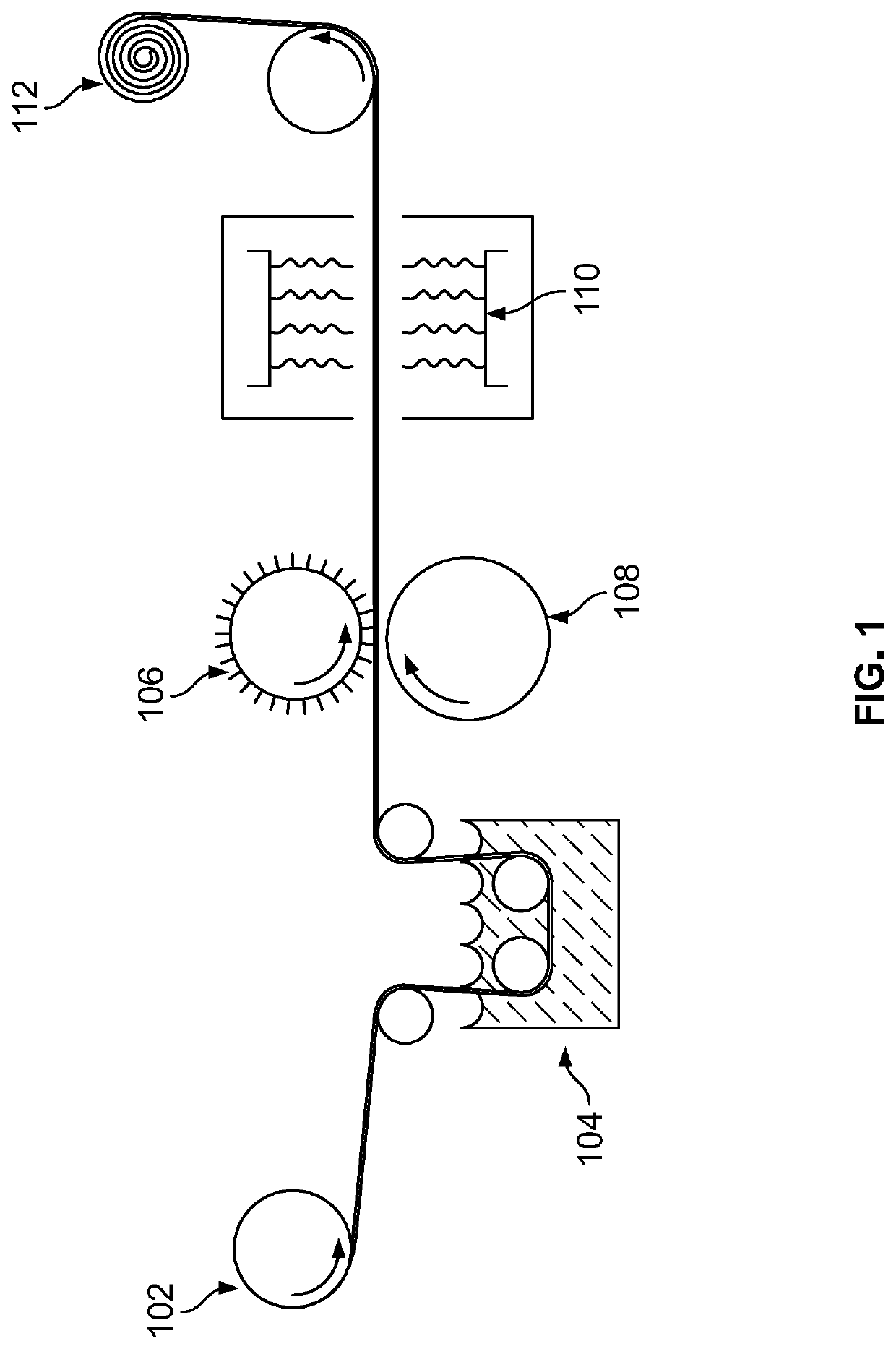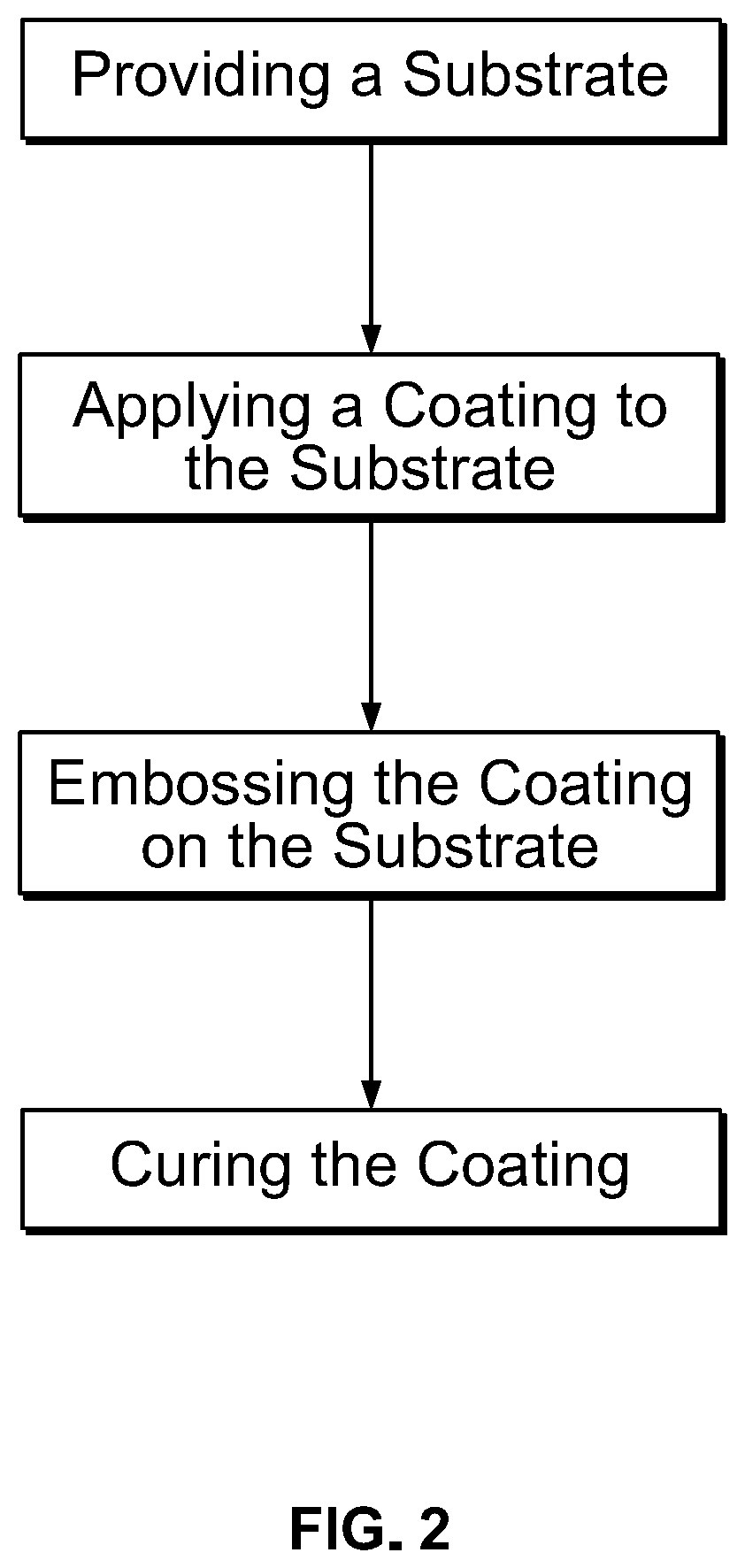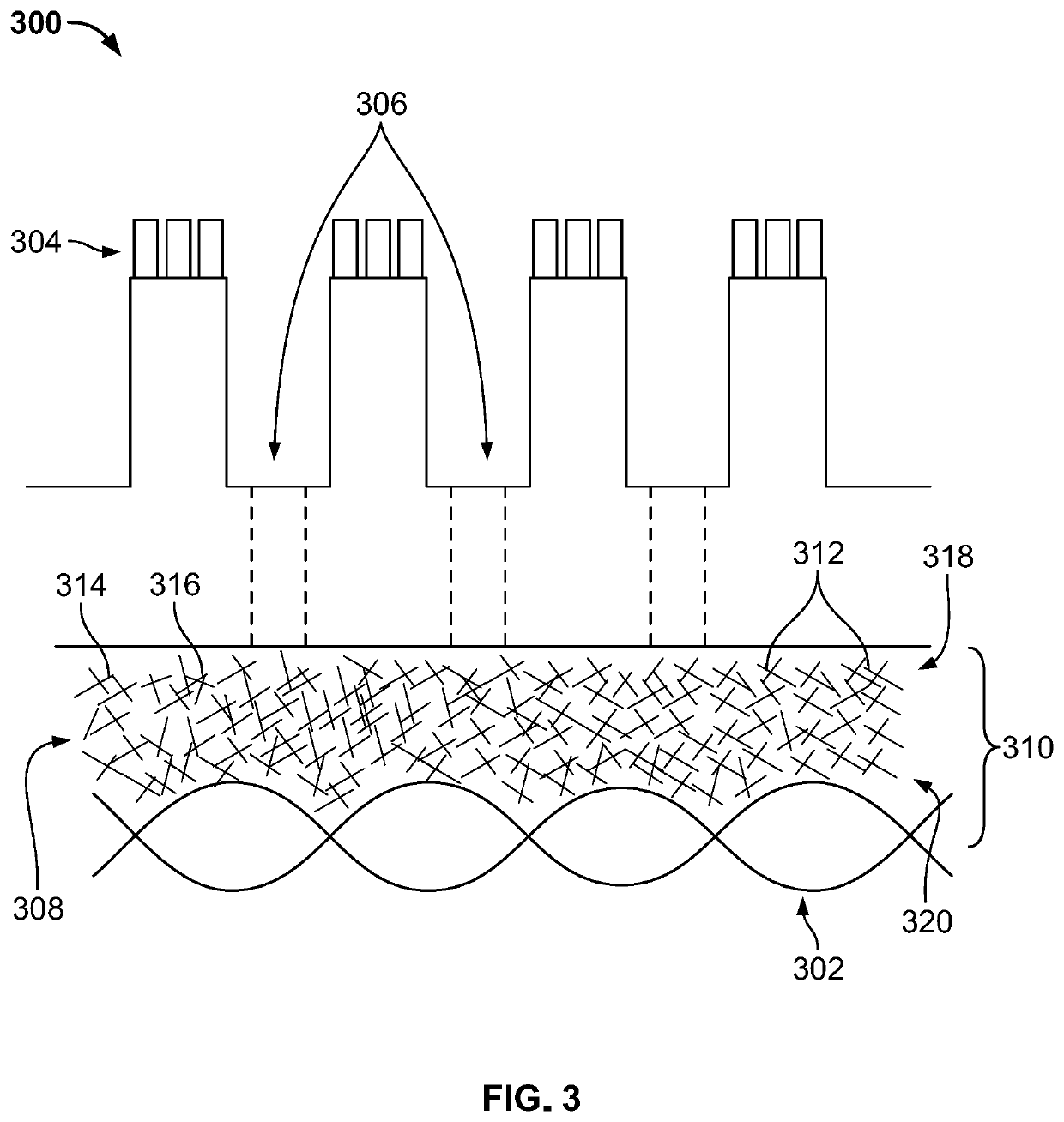Microstructured soft tissue graft
a microstructured, soft tissue technology, applied in the direction of prosthesis, surgery, coatings, etc., can solve the problems of migration, tissue trauma, patient pain, etc., and achieve the effect of low processing cos
- Summary
- Abstract
- Description
- Claims
- Application Information
AI Technical Summary
Benefits of technology
Problems solved by technology
Method used
Image
Examples
example 1
A Microstructured Surface
[0088]Referring to FIG. 5, a microstructured surface 500 is disclosed which may include a substrate 502. The substrate 502 may include a first sinusoidal microstructure 504, second pillar microstructure 506 disposed on the sinusoidal microstructure, and third fluted microstructure 508 disposed on the second pillar microstructure. Each of the three different microstructures are arranged hierarchically. The diameter, pitch, and height for each of the microstructures may be defined as follows. The first sinusoidal microstructure dimensions are 1.1× to 10× the dimensions of the second pillar microstructure dimensions. The second pillar microstructure dimensions may be 1.1× to 10× the dimensions of the third fluted microstructure dimensions. The second pillar microstructures can have any elliptical or polygonal cross section.
example 2
Mesh Coating a Microstructure Prepolymer
[0089]In certain embodiments, microstructures can be formed in polymers which crosslink to a fixed shape or are swellable. Swelling microstructures may have the added advantage of actively engaging a target surface, such as tissue, as the microstructure swells.
[0090]Poloxamer and Polylactic Acid Based Hydrogel
[0091]Pluronic 31R1 (molecular weight 3250) (BASF, Mt. Olive, N.J.) was dried under vacuum at 85° C. for 12 hours in a spherical flask. The final water content obtained was below 300 ppm. One equivalent of Pluronic 31R1 was added to ⅕ equivalent (1)-Lactide and 0.18 grams catalyst (stannous 2-ethyl hexanoate) (0.43%). The reaction was carried out in a sealed flask, under a dry nitrogen saturated atmosphere, for two and half hours at 145° C.
[0092]To the above synthesis is added 2 equivalents of toluene diisocyanate and reacted at 60° C. for 8 hours. To this result is added ½ equivalent of a biofunctional molecule, for example a boswellia e...
example 3
Polyethylene Glycol and Polylactic Acid Base Hydrogel
[0095]Polyethylene glycol (“PEG”) (molecular weight 3000) was dried in vacuo overnight at 85° C. Thereafter, the PEG was cooled to room temperature and the product capped with dry nitrogen. One equivalent of PEG was added to ⅕ equivalent (1)-Lactide and 0.18 grams catalyst (stannous 2-ethyl hexanoate). The mixture of PEG and lactide was placed in an oil bath under flowing nitrogen at 140° C. and mixed for 3 hours.
[0096]To the above synthesis is added 2 equivalents of toluene diisocyanate and reacted at 60° C. for 8 hours. To this result is added ½ equivalent of a biofunctional molecule, for example a boswellia extract and reacted at 75° C. for 8 hours.
[0097]A hydrogel of desired viscosity is formed by adding appropriate amounts of water. For example, for high a viscosity gel, 1 g water may be added. For a low viscosity gel, 100 g of water may be added.
PUM
| Property | Measurement | Unit |
|---|---|---|
| Length | aaaaa | aaaaa |
| Fraction | aaaaa | aaaaa |
| Diameter | aaaaa | aaaaa |
Abstract
Description
Claims
Application Information
 Login to View More
Login to View More - R&D
- Intellectual Property
- Life Sciences
- Materials
- Tech Scout
- Unparalleled Data Quality
- Higher Quality Content
- 60% Fewer Hallucinations
Browse by: Latest US Patents, China's latest patents, Technical Efficacy Thesaurus, Application Domain, Technology Topic, Popular Technical Reports.
© 2025 PatSnap. All rights reserved.Legal|Privacy policy|Modern Slavery Act Transparency Statement|Sitemap|About US| Contact US: help@patsnap.com



